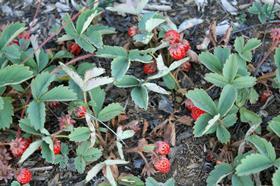
The discovery of a wild strawberry in the US is providing new genetic material that could lead to a whole new class of commercial berry varieties hitting the market.
Kim Hummer of the US Department of Agriculture’s Agricultural Research Service made the discovery in the Cascade Mountains in the north-western US state of Oregon. She works with the National Clonal Germplasm Repository and has named her discovery Fragaria Cascadensis.
The new strawberry is a perennial plant with white flowers and green leaves, and it differs from other strawberry species of the region by having hairs on the upper side of its leaves and comma-shaped, small brown fruits called achenes on the strawberry surface. It also has 10 sets of chromosomes while commercial strawberries have only eight sets.
According to Hummer, the new strawberry’s biggest impact could come by crossing it with other strawberries that have the same number of chromosomes, such as the cultivated F. vescana or the wild Russian species F. iturpensis. Those crosses could produce hybrids with disease resistance, improved flavour, or other important traits.
The strawberry’s distribution in the mountain range where it was discovered is at elevations from about 900m up to the tree line. The northern distribution has an average annual precipitation of 30-38cm, but the southern range receives only about 15cm of precipitation annually.
Fragaria cascadensis is now included in the living collections of the germplasm repository.



